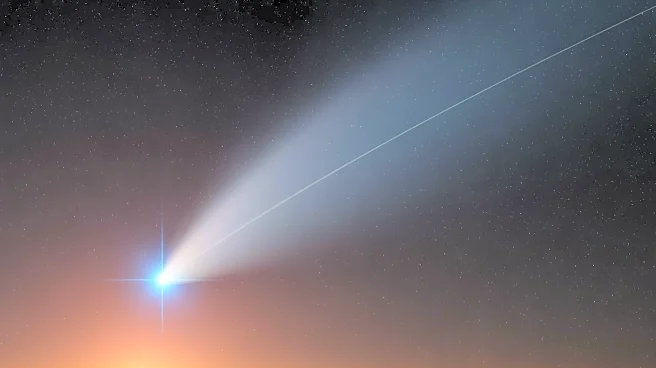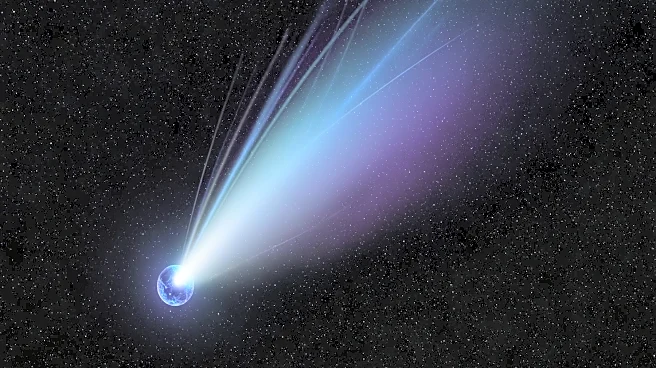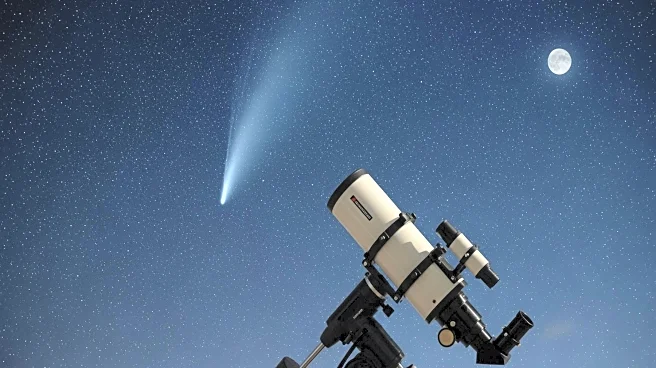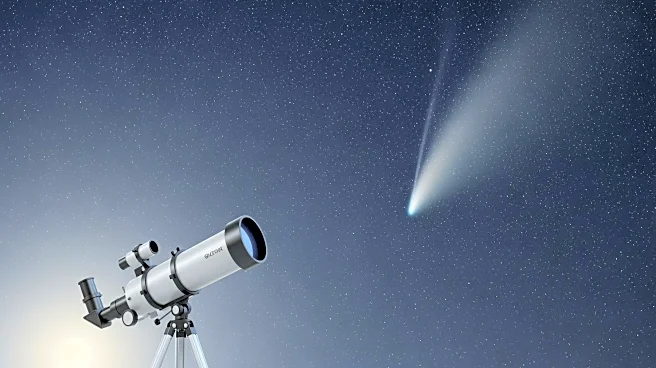What's Happening?
Comet Lemmon, designated C/2025 A6, is set to reach its closest point to the sun on November 8, 2025. This comet has been a highlight for skywatchers throughout the year, particularly in the Northern Hemisphere.
Although it has been competing with a bright moon, Comet Lemmon remains visible with binoculars from dark-sky locations. The comet was closest to Earth on October 21, 2025, and has since moved southward in the sky. It is currently located in the constellation Ophiuchus. Despite fading slightly, it remains within the visibility range for observers using optical aids.
Why It's Important?
Comet Lemmon's approach provides a rare opportunity for astronomers and the public to observe a celestial body that only orbits the sun once every 1,350 years. Such events are significant for scientific study, offering insights into the composition and behavior of comets. For amateur astronomers and enthusiasts, this is a chance to engage with the night sky and capture images of the comet. The event also serves to inspire interest in astronomy and the natural sciences.
What's Next?
As Comet Lemmon continues its journey, observers are encouraged to use binoculars or telescopes to view the comet, especially in the western sky after sunset. The comet's visibility will gradually decrease as it moves away from the sun. Astronomers will continue to track its path and gather data to enhance understanding of its characteristics and trajectory.











